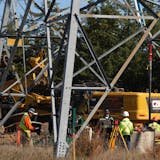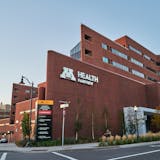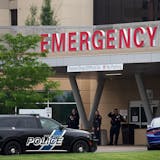Nadia Mohamed walked into the newly renovated St. Louis Park High School and started her tour down memory lane.
It had been a decade since she’d walked these halls as a Somali refugee trying to blend in as a typical American teenager. But blending in wasn’t easy. There weren’t nearly as many Somali students in the school as there are today, and Mohamed felt her hijab made her stick out. When she performed prayers in the back of the school’s media center, she hoped other students didn’t notice her. She was a wallflower who had yet to find her voice.
She has since found that voice. Mohamed, 28, was elected mayor of the historic capital of Minnesota Jewish culture a month after the Oct. 7 attacks renewed tensions between Jews and Muslims here and around the world.
This could be a recipe for divisive local politics: A newly elected Muslim mayor in a heavily Jewish area during the devastating war in Gaza and the continued uncertainty about Israeli hostages. Those heated politics have been on display nationally and locally this year, with the Minneapolis City Council passing a symbolic ceasefire resolution in January and a resolution this month expressing solidarity with pro-Palestinian protesters at the University of Minnesota.
Yet St. Louis Park residents say the main story of the first year of America’s first elected Somali American mayor is that it hasn’t been a story.
Instead of wading into the heated waters of international politics, her time has been spent on the daily duties of being mayor: Debating water quality improvement projects or traffic control changes, adopting a cannabis zoning ordinance and an inclusionary housing policy, riding along with police on National Night Out and appearing at a Fire Department open house, recording a video for a second-grade class on what it’s like to be one of the youngest mayors in the state. And doing all that while working her full-time job as a trainer for social workers in the Minnesota Department of Children, Youth and Families.
Mohamed’s political philosophy centers on bridge-building: Valuing relationships over political grandstanding, knowing what her role as mayor is — and isn’t.
Earlier this year for Yom Kippur, Mohamed accompanied Steve Hunegs to the evening Kol Nidre service at Beth El Synagogue in St. Louis Park. Hunegs, whose family has lived in St. Louis Park for three generations and who leads the Jewish Community Relations Council of Minnesota and the Dakotas, explained the service to her. The two compared elements of Judaism and Islam. Congregants appreciated her presence, Hunegs said, especially on Judaism’s holiest holiday, which fell just after the one-year anniversary of the Oct. 7 attacks.


